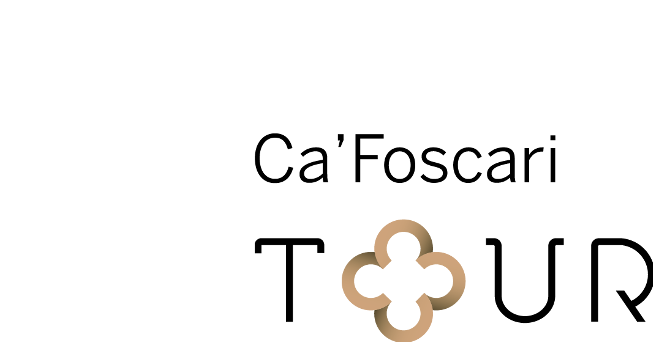About Us
Ca’ Foscari Tour is the official guided tour service of Ca’ Foscari University of Venice. It was established a few years after Ca’ Foscari’s last restoration with the aim of promoting the University immense historical and cultural heritage.
The guided tour began on March 16th, 2009 with the first tour of the university: an exclusive itinerary through Ca’ Foscari’s most representative spaces such as the Aula Baratto, masterpiece of the Venetian architect Carlo Scarpa.
Ca’ Foscari Tour has been constantly growing and developing since then. In 2015, alongside the creation of the new logo (the golden quatrefoil) the new Ca’ Foscari and Ca’ Dolfin tour was added, offering the chance to tour on Saturdays.
Ca’ Foscari Tour organises different events and initiatives every year. It takes part to the most important events in the city, such as Art Night and the Historical Regatta, and international events such as the European Heritage Days. It also promotes the history and the beauty of the Ca’ Foscari premises through social media and sets up exhibitions of it’s Historical Background in collaboration with the Ca’ Foscari Historical Archive.
Ca' Foscari History
The Ca’ Foscari University of Venice was founded the 6th August 1868 as a Royal School of Commerce, by a group of brilliant intellectuals: Luigi Luzzatti, a law teacher and former minister; Edoardo Deodati, vice-president of the Province of Venice and Francesco Ferrara, the headteacher of the school for its first 32 years. The institute was the first business school in Italy: its main aim was both to train tradesmen and to prepare the future teachers of economics. Moreover, since the foundation, students were also required to study languages, both Western (French, English, German, Spanish, modern Greek) and Eastern (Arabic, Turkish, Serbo-Croat, Japanese).
In 1935 Ca’ Foscari became a governmental University institution and the Faculty of Economics and Business was founded (later renamed the Faculty of Economics in 1994).
In 1954 the Faculty of Foreign Languages was founded: it was the first in Italy. A century after its founding , in 1968, Ca’ Foscari became a fully-fledged University. In 1969 the Faculty of Humanities was founded and finally, in 1970, the Faculty of Chemistry was added, later renamed Faculty of Sciences.
Today the Ca’ Foscari University has about 20.000 students and 4.000 graduates every year. It covers 4 scientific and cultural areas - Foreign Languages and Literatures, Humanities, Economics, Sciences – organised into 8 Departments. In 2012 an International College was created, a school of excellence for the best students. The Ca’ Foscari Challenge School organises Specialist Master’s Programmes, while the Ca’ Foscari International School promotes summer courses for international students.
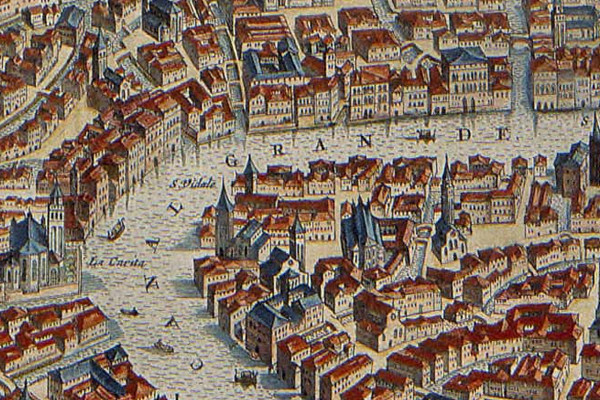
1429: The "House of the two Towers"
The Republic of Venice purchased the "House of the two Towers" from Bernardo Giustinian, in order to make it a representative palace. The building was renowned in the city for its two lateral towers and its special position in "volta de Canal", the largest bend of the Grand Canal (about 50 meters wide). This palace was later l replaced by Ca' Foscari.
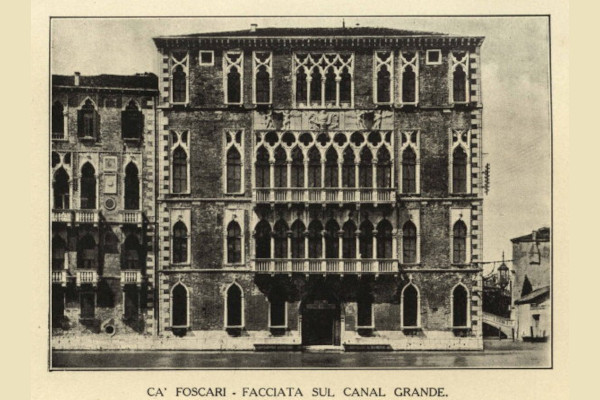
1453: Ca' Foscari
The Republic of Venice sold the "House of the two Towers" at auction. The doge Francesco Foscari bought it and ordered the construction of a new building as his private residence: Ca' Foscari.
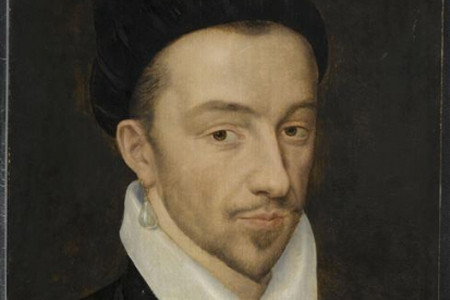
1574: Enrico III of Valois
After the doge's death, Ca' Foscari was inherited by his family. The building became a palace for hosting important guests of the Republic, such as Henry III of Valois, King of France and Poland, in 1574. This was an important political event, with many Italian princes visiting to pay homage to the king.

1740: Canaletto at Ca' Foscari
Ca' Foscari is located in "volta de Canal", the largest bend of the Grand Canal (about 50 meters wide). This wonderful location was celebrated by many landscape painters throughout the centuries, such as Antonio Canal, also known as "il Canaletto". In 1740 he depicted the Regatta on the Grand Canal, that represents the arriving-point of the Historical Rowing Race, probably from one of the two floors of the palace.
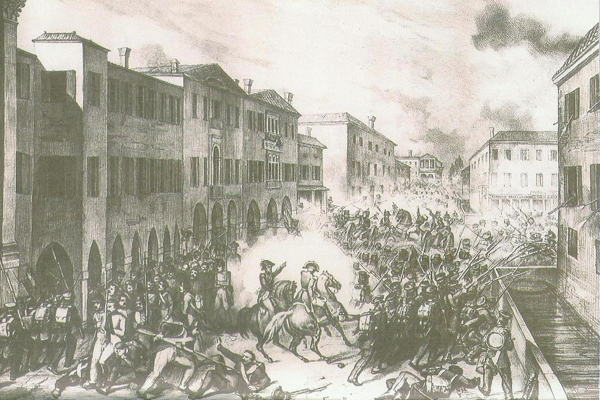
1849: Ca' Foscari becomes an Austrian barrack
The 26th August, after a temporary surrender on the 22nd March 1848, the Austrians occupied Venice and many noble palaces were used as barracks. Among them, Ca' Foscari became a barrack and this caused the deterioration of the decorative features and the damage of the architectural structure of the building.
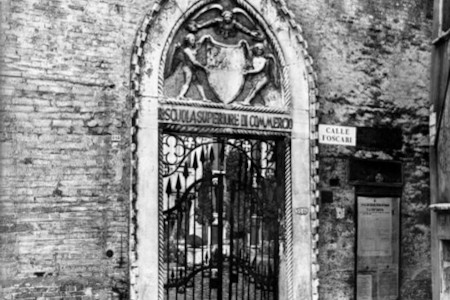
1868: The Royal School of Commerce
After the annexation of Venice to the Reign of Italy, the Royal School of Commerce was founded the 6th August 1868 and Ca' Foscari was donated to the institute by the Municipality of Venice. It was the first business school in Italy: its main aim was both to train tradesmen and to prepare the future teachers of economics. Francesco Ferrara, - a congressman, , former minister and teacher of political economics - became the first director of the School during the first 32 years.
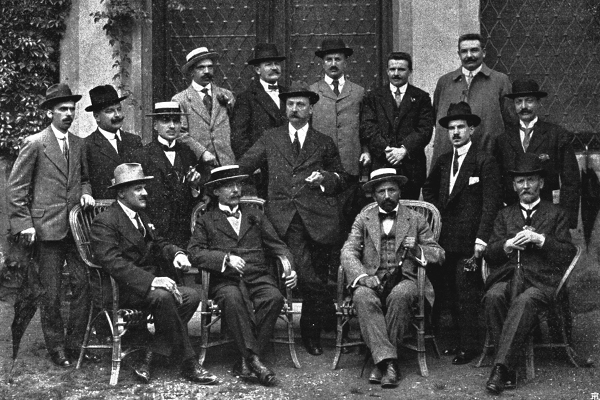
1898: Old Students Association
The 5th June a group of former Ca' Foscari students founded an association called the Old Students Association. In a few months 185 members joined the group, and the numbers increased steadily over the years. Nowadays, Ca' Foscari Alumni is the association of the graduates of Ca' Foscari from all over the world.
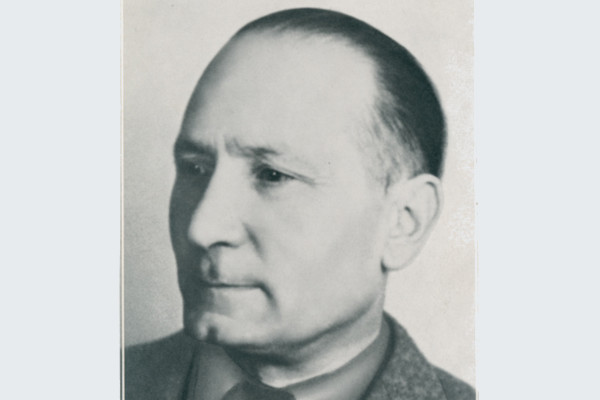
1926: Silvio Trentin leaves his teaching position
Silvio Trentin was born the 11th November 1885 in San Donà di Piave (VE) Silvio Trentin taught public law at Ca' Foscari between 1923 and 1926. In February 1926 he abandoned his teaching career in opposition to the Fascist government, and was one of the only 3 teachers who resigned their post in Italy. The Great Hall of the University, in Ca' Dolfin, is named after him.
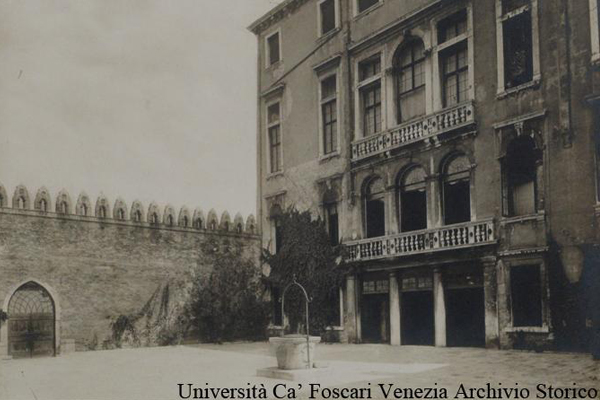
1935: The Faculty of Economics is founded
The Royal School of Commerce became a governmental University institution and the Faculty of Economics was founded. During the following years three other Faculties were added: the Faculty of Foreign Languages in 1954, the Faculty of Humanities in 1969 and the Faculty of Chemistry (then renamed Faculty of Sciences), in 1970.
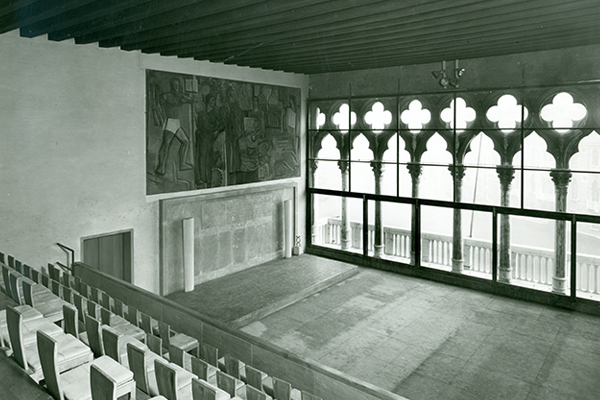
1936: Scarpa designs the current Aula Baratto
The rector Agostino Lanzillo commissioned the Venetian architect Carlo Scarpa to restore some parts of Ca' Foscari and to design the first Great Hall of the University, the current Aula Baratto. Scarpa's project, designed between 1935 and 1937, included the window frame, the students' tribune, the wooden platform where the desk is located, the marble frieze and the two marble pedestals.
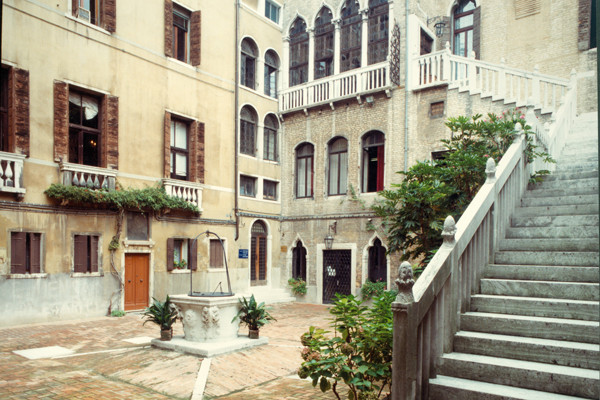
1942: Ca' Giustinian dei Vescovi
The University bought Ca' Giustinian dei Vescovi (the acquisition was completed in 1966) a XV century palace situated next to Ca' Foscari, which used to belong to the Giustinian family. Nowadays it hosts the Rector's office and the exhibition areas of the Ca' Foscari Foundation.
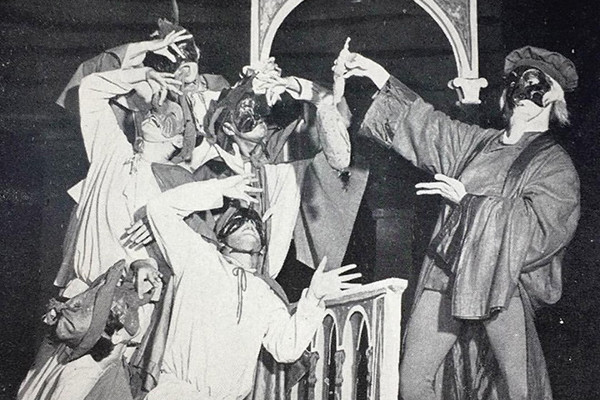
1953: Inauguration of the Ca' Foscari Theater
On the evening of the 21st March, at the instruction of of the rector Gino Luzzatto, the Ca' Foscari Theatre on the ground floor of Ca' Giustinian dei Vescovi was inaugurated. The theatre remained active active until 1975, when it was substituted with administrative offices.
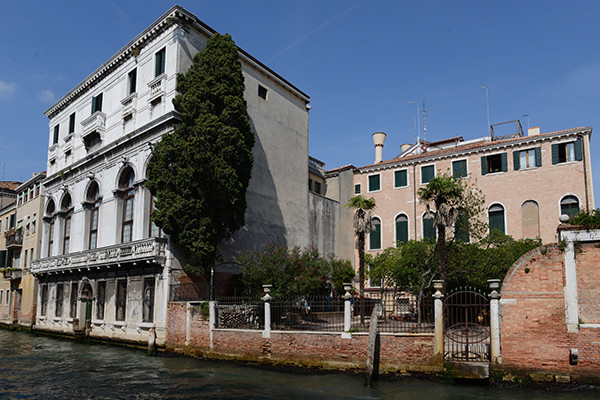
1955: Ca' Dolfin
The University bought Ca' Dolfin, a XVI century palace located in Rio Novo that used to belong to the Dolfin family. On the third floor of the building the Ca' Foscari Univesrity Boarding School was created, which hosted worthy students from all over Italy. It was active between 1961 and 1973.
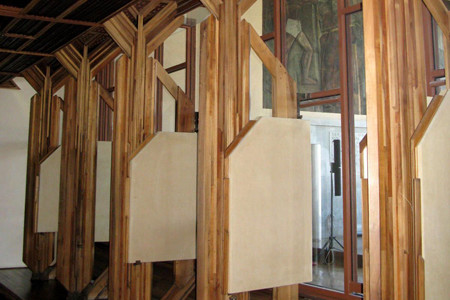
1956: Scarpa designs the boiserie
The rector Italo Siciliano asked Carlo Scarpa to return to Ca' Foscari in order to transform the Aula Baratto into a lecture hall. For this reason, between 1955 and 1956 Scarpa removed the old students' tribune and designed the boiserie, the magnificent wood and glass structure which divides the external corridor from the room.
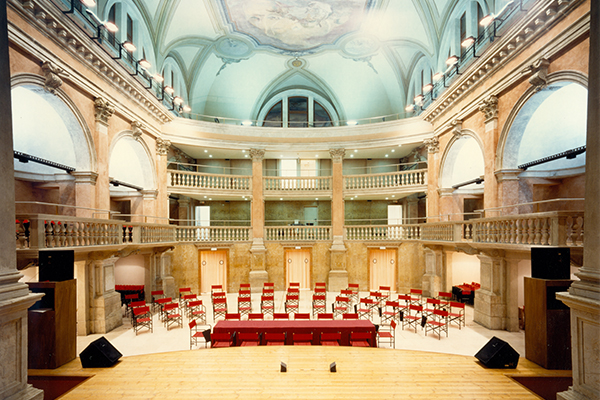
1995: Inauguration of the Auditorium Santa Margherita
The Auditorium in campo Santa Margherita, a IX century building which used to be the Saint Margaret's church, was inaugurated in 1995. The auditorium seats 237 people and can hold large-scale events such as theatrical productions, film festivals, conferences and congresses, national and international seminars and conventions.
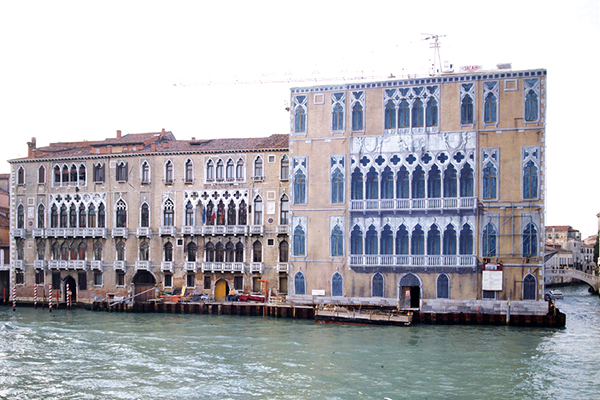
2007: Torta Prize
The restoration of Ca' Foscari and Ca' Giustinian dei Vescovi, conducted by the firm SACAIM between 2004 and 2006, won the Torta Prize. The main aim of the restoration was to fulfil the new safety and energy-saving requirements put in place without altering the original structure and decorations of the building.
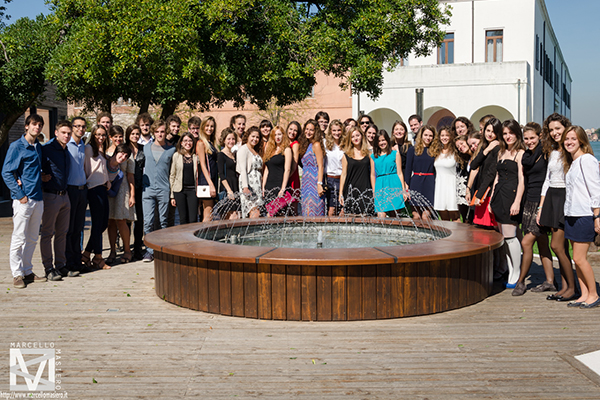
2012: International College
The International College was created. It provides education in English to young, deserving graduates, and it offers them free accommodation on the island of San Servolo.
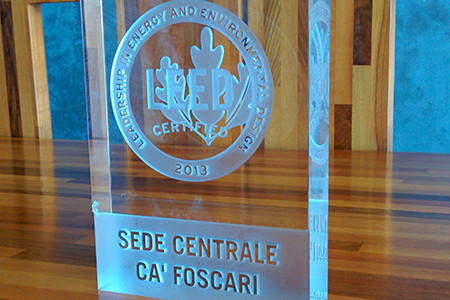
2013: LEED Certification
On the 19th September 2013, the US Green Building Council awarded the LEED Certification to the Ca' Foscari Palace, which attests the levels of sustainability promoted by the University. At the moment Ca' Foscari Palace is considered the oldest sustainable building in the world.
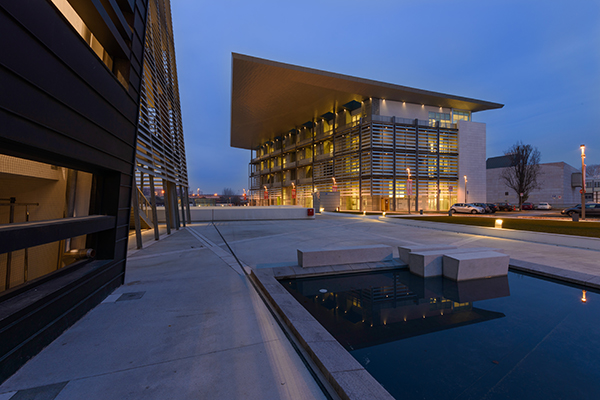
2014: Inauguration of the Campus of Science
The Campus of Sciences in via Torino, Mestre (VE) was inaugurated on the 26th September and became accessible on the 29th September. The brand new headquarter of the Sciences is now organised in 6 buildings and hosts classrooms, educational labs, the Library and the Auditorium.
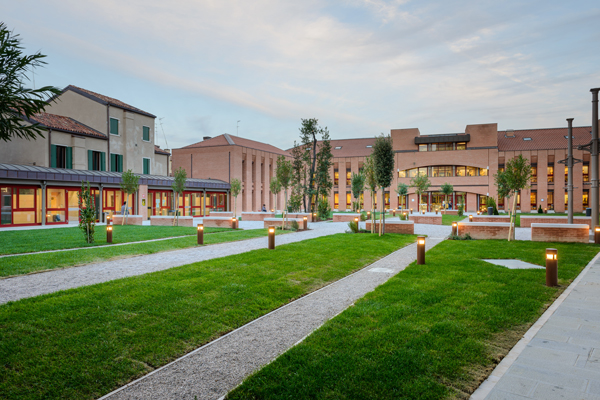
2015: Inauguration of the Campus of Economics
After its restoration, the area formerly named The Mulini Passuello area, was inaugurated as the Campus of Economics in San Giobbe. It joins all the activities of the Economics area and contains classrooms, the Library, educational labs and offices of the Economics and Management departments.
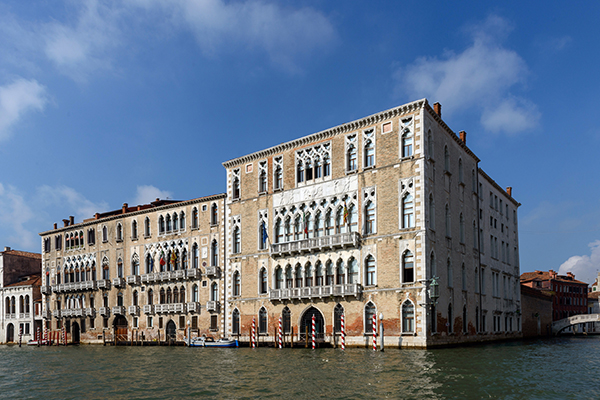
2018: Ca' Foscari: 150 years of history
In 2018 the Ca' Foscari University of Venice will turn 150 years since its foundation (6th August 1868). Throughout this year we are taking official and cultural celebrations dedicated to the history of the University and to the projects of the Athenaeum for the next 150 years.

